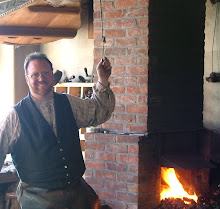To get the the pond, of course! Our Cayuga ducks were busily working in the field this spring after a late snow. They forage much of the day for their food.
Ducks eat both plants and insects. They looked very intent as they worked through the new grass near the pond.
They moved right into the pond. Ducks have feathers and down that insulate them from the cold water.
They love to swim, and looked for tasty treats in the water.
Cayuga are "Puddle Ducks", not "Diving Ducks". They tip up and reach underwater for food, but don't swim underwater like a Loon or Cormorant. They also splash water on themselves to groom their feathers.
If you visit us at The Farmers' Museum be sure to walk down to the Farm and visit the ducks!



















